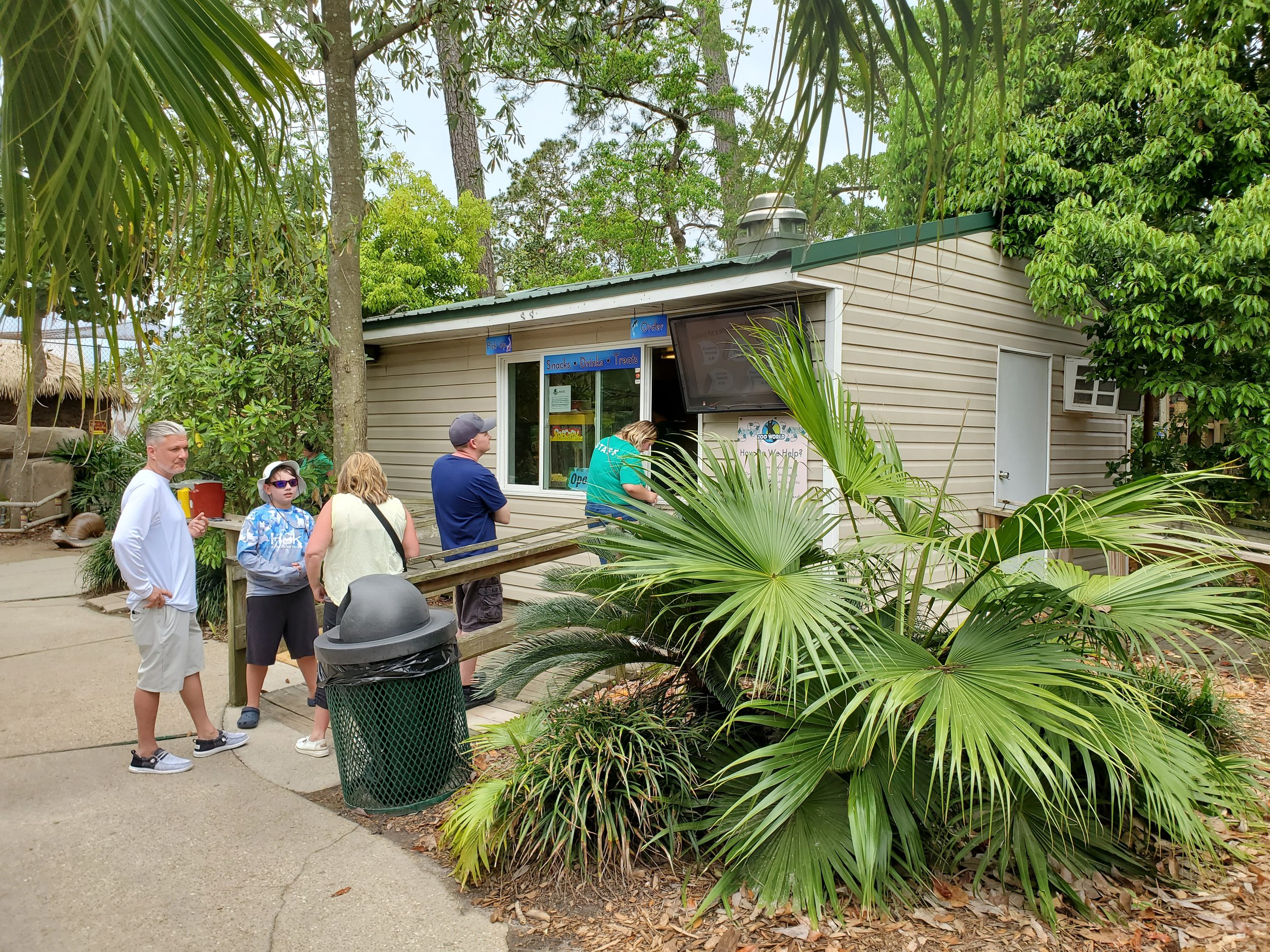Case Study: Zooworld
Note: Visit occurred in April 2022.
If you’ve ever spent time at a popular beachside destination in the U.S., you are probably well-acquainted with the kitschy, uniquely American, tourist trap vibe that often accompanies these places. Panama City Beach, FL is no exception. Brightly colored signs dot the roads inviting guests into themed or ramshackle seafood joints. Mini-golf courses with tall waterfalls and pirate ships are squeezed between ice cream shops and places to rent scooters and slingshot cars. It is in this context that we delighted in the tourist destination of ZooWorld.
To be sure, the five-acre ZooWorld is not without its problems, but overall, the experience is happy and fun with a dose of humor, and the park is clean and comfortable, if not outdated in places. That’s one of the biggest take-aways here—the contrast of the new habitats against the old. The new habitats, like the Wanayama Pori Air Strip Adventure, utilize inexpensive materials and props to create a visually and texturally rich environment without breaking the bank on capital costs. Inventive and clever layered views and rotational exhibits provide surprises for the guests, even for repeat guests (which, I’m guessing are NOT the major target audience here in Panama City Beach). The Australian area including the homage to PCB historical staple, Snake-o-rama, and the barnyard each utilized simple metal buildings and wood timbers layered with well-designed graphics to create interesting and thoughtful immersive settings.
The ingenuity and forward-thinking of these areas were highlighted even more against the outdated habitats dotted throughout, especially bears and tigers. You know things aren’t in the best state when guests can be overheard multiple times saying, “I feel bad for the tiger.” To be fair, the tiger habitat, while definitely small, did provide a waterfall and wading area along with multiple options for climbing, but was, unfortunately, rather unappealing visually and, in my opinion, should be the next area up for renovation.
Another habitat that felt old visually—the monkey islands—provided a surprisingly rich environment when more deeply examined—at least for one species, the capybara. The older exhibit area which is a series of small islands surrounded by viewing housed multiple species—siamang, capybara, and macaws. Macaws and siamangs each had their own islands (as far as I could tell that day), but capybaras, being animals who love to swim, could easily move from island to island. I stood watching the capies, captivated, as they waded into the water, swam around, entered a new island, or sat submerged in the water with only their heads exposed.
The big attraction at ZooWorld, however, are not the habitats themselves, but the level of interaction with animals that is available to guests. Even if you do not pay the extra $5 or $10 to purchase feed for alligators, goats, giraffes, or budgies, guests can freely touch and pet rabbits, goats, emus, a mini-horse, donkey, and others. While certainly exciting (admittedly, the rabbit cuddles were my favorite part), I personally didn’t see many, if any, staff or volunteers stationed at these interaction zones to monitor guest or animal behaviors. This was a bit troubling to me, especially at the rabbit area where baby bunnies were easily within reach.
ZooWorld also missed an opportunity to take advantage of food and beverage sales. While I definitely appreciated the beer sales right at the ticketing desk, only a small concession booth and some vending machines were available inside the park. Yes, the zoo is only five acres, but with all of the interactions available including the full menu of special one-on-one interactions for $45 per person, length of stay here is likely two hours or more. What’s more, in the setting of PCB, where themed experiences and kitsch of all kind are the expected and norm, ZooWorld has the unique opportunity to create an over-the-top dining experience, including the unicorn to many of my clients, the restaurant outside the gate. I imagine a Rainforest Café-type experience with live animals and views into adjacent exhibits would do gangbusters here. Instead, guests can grab typical quick bites from a basic stand--akin to one found at a little league field. In fact, I overheard several guests complain that they wanted to eat lunch, but selection at the zoo was disappointing.
While ZooWorld certainly isn’t perfect (I didn’t event touch on the entry experience)—and no zoo truly is, this little gem continues to redevelop drawing inspiration from its history as a beach attraction creating a wacky, fun, interactive experience that hits exactly the right notes.













































